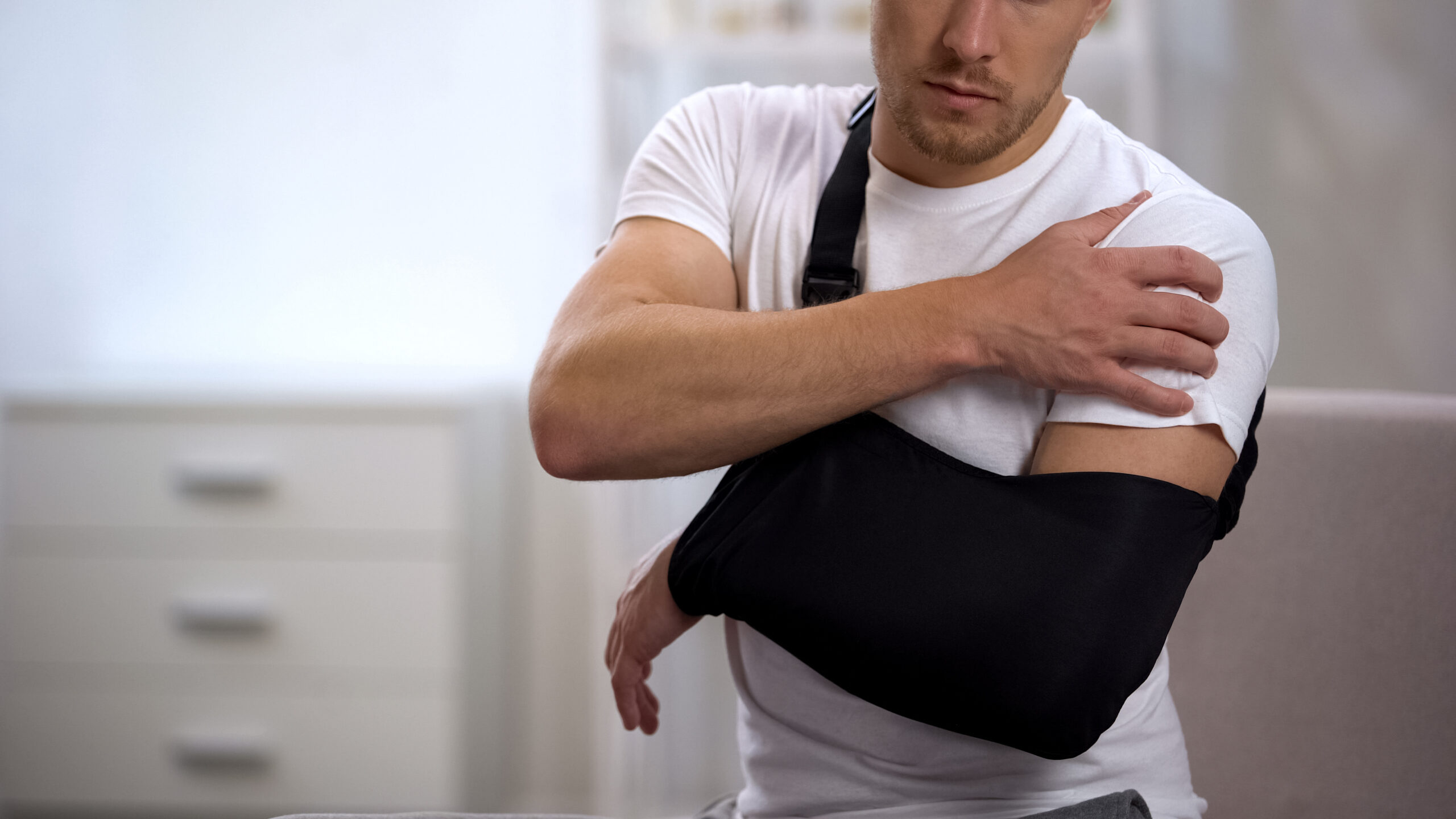Rotator cuff tears occur in nearly 30% of people over the age of 60. Some rotator cuff tears are treated conservatively with physical therapy. However, many will require arthroscopic surgery to repair the torn tendons. More than 500,000 rotator cuff repair surgeries are performed each year in the U.S. Postoperative physical therapy is crucial if you want to achieve a successful long-term outcome following surgery.
Early Physical Therapy After Rotator Cuff Repair
Re-tearing of the surgically repaired rotator cuff tendon is common following surgery. Most re-tears occur within the first 3 to 6 months following surgery. Another potential complication is stiffness or loss of motion in the shoulder. Appropriate exercise prescribed by your physical therapist will minimize your risk of re-tearing your repair and help reduce stiffness.

Some surgeons recommend a 6-week period of strict immobilization in a sling without any physical therapy. Other surgeons allow protected motion and passive exercise within 2 weeks following surgery. Research suggests most patients can safely begin physical therapy early after surgery. This minimizes stiffness of the shoulder and loss of muscle in the rotator cuff. However, patients with larger tears may benefit from delaying physical therapy for 4 to 6 weeks to protect the healing repair.
Protection and Early Motion
After surgery, your shoulder will be immobilized in a sling for the first 4 to 6 weeks. During this period, you may perform very low-load exercises initiated by your physical therapist. These exercises require low activation of your rotator cuff muscles. This approach protects your healing repair, reduces stiffness, reduces pain, and minimizes muscle loss. The following 7 exercises may be prescribed based on the size of your tear, surgeon preference, and other individual factors.
Forward Bow
Begin standing with your hands resting on a tabletop or counter. Relax your shoulder and neck muscles. Slowly step backward while keeping your hand on the table or counter. When a mild stretch is felt, pause and hold the position for 5 to 10 seconds. Avoid exercising through pain.
Table Slides
Stand holding a towel with your hand of the involved arm resting on a tabletop or counter. Relax your shoulder and neck muscles. Slowly lean forwards and slightly out to the side (a 45-degree angle) while sliding your hand on the table or counter. When a mild stretch is felt, pause and hold the position for 5 to 10 seconds. Avoid exercising through pain.
Ball-Assisted Scapular Protraction
Begin standing with your hand resting on an exercise ball on a tabletop or counter. Relax your shoulder and neck muscles. Slowly roll the ball forward and slightly to the side (a 45-degree angle). When a mild stretch is felt, pause and hold the position for 5 to 10 seconds. Avoid exercising through pain.
Wall-Assisted External Rotation
Stand facing the corner of a wall. Place a small towel roll under your arm. Bend your elbow and rest your hand on the corner of the wall. Slowly step and turn your body away from the wall. Maintain your elbow tucked to the side and your hand on the wall. Pause and hold the position for 5 to 10 seconds. Avoid exercising through pain and avoid overstretching the shoulder into external rotation.
Cane-Assisted External Rotation
Begin lying on your back with a small pillow or towel roll under your upper arm. Hold a cane, golf club, or similar object with both hands. Use your other arm to passively rotate your involved arm out to the side. Maintain the elbow of your involved arm at a 90-degree angle throughout the exercise. Pause and hold the position for 5 to 10 seconds. Avoid exercising through pain and avoid overstretching the shoulder into external rotation.
Washcloth Press-Up
Lie on your back with your knees bent. Hold a small towel with your hands close together. Your other arm assists in lifting your involved arm straight up to the ceiling. When your elbow reaches full extension, pause and hold the position for 5 to 10 seconds. Avoid exercising through pain. Progress this exercise by performing it in a slightly reclined position.
Supine Self-Assisted Flexion
Begin lying on your back with your hips and knees bent. With your other hand grasp the wrist of your involved side. Next, passively lift your involved arm overhead. Maintain a straight elbow. Pause and hold the position for 5 to 10 seconds. As your pain diminishes, progress the exercise by increasing the duration of the stretch up to 30 seconds.
Team Up with Your PT for Successful Rotator Cuff Rehabilitation
Rehabilitation following rotator cuff surgery begins with an introduction to protected range of motion exercises. During the first few weeks of rehab, you will perform exercises similar to those in this article. At approximately 6 weeks after surgery, the focus shifts to restoring active range of motion exercises without resistance or weights. Progressive strengthening exercise begins at postoperative week 12. Future articles will address these phases of rehabilitation.
If you want to learn more about rehabilitation and recovery from rotator cuff surgery, contact your physical therapist today.


